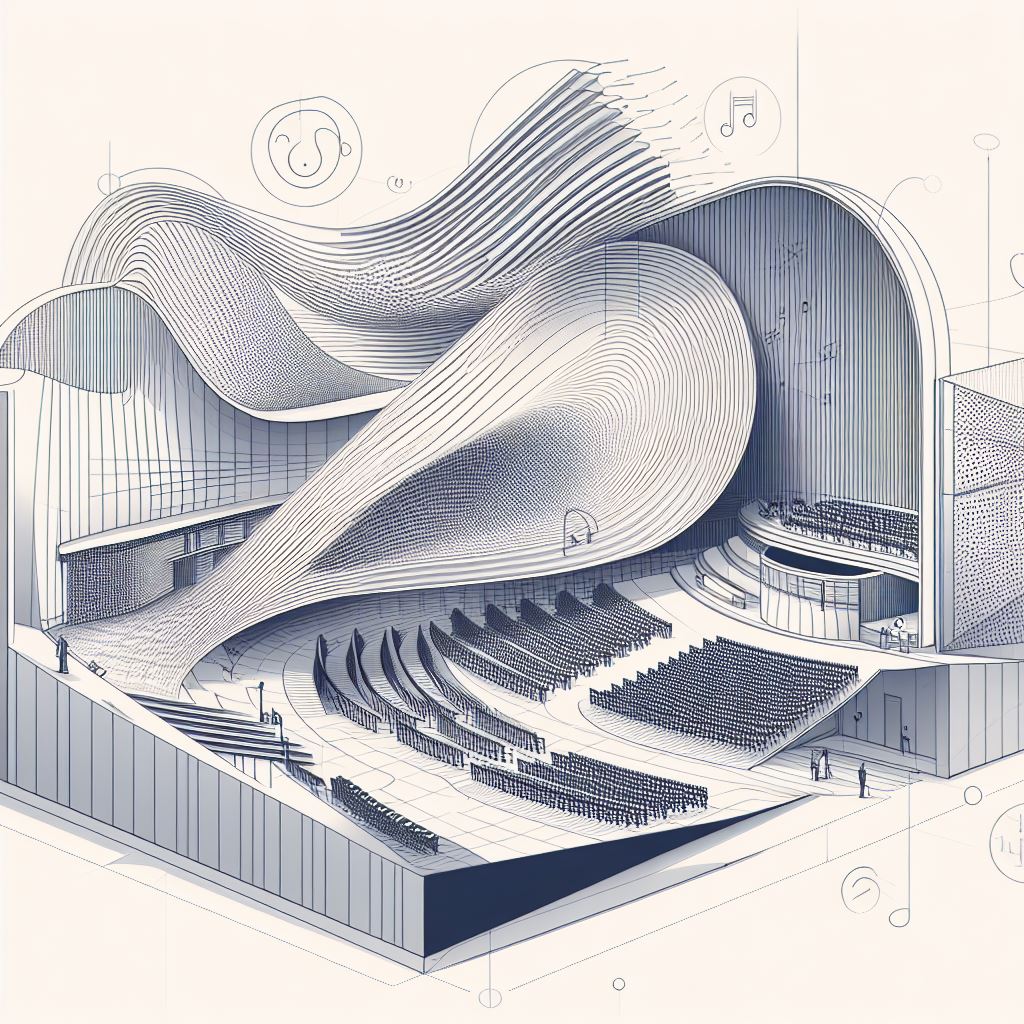
Effective Acoustic Design in Modern Architecture
Introduction
In the contemporary realm of architectural design, the "science of acoustics" has gradually cemented itself as an indispensable component. Striking a harmony between aesthetic appeal and acoustic functionality is not merely a preference but a nuanced necessity. This in-depth exploration into the integration of acoustic design within architectural frameworks serves architects, acoustic engineers, interior designers, and construction professionals, striving to comprehend and implement optimal aural conditions within various spatial settings.
1. Acoustic Science Decoded in Architectural Context
Understanding Acoustic Design
Acoustic design, often synonymous with sound design or aural design, delves into the pragmatic aspect of controlling, manipulating, and constructing a sound environment. Its implementation within architectural blueprints goes beyond mere noise management, addressing aspects such as sound absorption, reflection, diffraction, and interference to curate a balanced auditory experience.
Fundamentals of Acoustics:
- Sound Absorption: Utilizing materials and techniques to mitigate sound reverberations.
- Noise Reduction: Employing strategies to minimize unwanted or harmful noises.
- Sound Reflection and Scattering: Managing how sound propagates and spreads within a space.
The Intersection of Acoustics and Architecture
Architectural acoustics mesh art with science, considering not only the structural and aesthetic components but also how sound waves interact with them. Key areas, where acoustic solutions often weave into architectural practice, include residential buildings, theaters, offices, and educational institutions, each possessing unique acoustic demands and challenges.
Example:
The "Elbphilharmonie" concert hall in Hamburg, Germany, exemplifies architectural acoustics par excellence. The utilization of algorithmically generated gypsum fiber panels, each uniquely shaped, manages sound reflection meticulously, ensuring impeccable acoustic clarity and providing an unparalleled auditory experience.
2. Pioneering Techniques and Materials in Acoustic Design
Material Innovations
Embracing sonic architecture involves the adept selection of materials conducive to sound management. Numerous materials are recognized for their sound-absorbing properties, such as:
- Acoustic foam
- Mineral wool
- Acoustic tiles
Implementing Acoustic Science
This involves harnessing strategic placements of acoustic materials, considering the volume, shape, and materiality of surfaces, and leveraging technology to enhance natural acoustics, thereby reducing noise pollution through architectural designs.
Case Study:
The “Whispering Gallery” in St. Paul’s Cathedral, London, offers a quintessential model where architectural form manipulates acoustic phenomena. The dome, meticulously crafted, allows whispers to travel along the perimeter, enabling clear audibility even across significant distances.
3. Impactful Acoustics on User Experience Across Building Types
Auditoria and Theaters
In spaces intended for performances, clarity of sound, and its uniform distribution become paramount, demanding meticulous acoustic planning.
Residences and Offices
Here, noise reduction becomes pivotal, ensuring serene environments conducive for rest in residences and focus in offices.
Educational Institutions
Optimal acoustics facilitate clear communication between educators and students, bolstering the learning experience by mitigating potential auditory barriers.
Example:
An empirical study by Shield and Dockrell (2008) delineated the profound impact of acoustical quality on students' learning and teacher’s vocal health within educational environments, highlighting that improved acoustic conditions correlate significantly with enhanced academic attainment and well-being.
4. Legalities and Standard Requisites in Architectural Acoustics
Navigating through the intricate web of legal and standard requirements related to acoustics in architecture necessitates acute awareness and adherence to regional and international guidelines.
Statutory Regulations:
- Building codes stipulating minimum acoustic conditions.
- Noise ordinances limiting permissible sound levels.
Acoustic Standards:
- ANSI/ASA S12.60: An American standard related to acoustic conditions in schools.
- ISO 3382: Pertaining to acoustic quality within performance buildings.
Adherence to these mandates not only safeguards legal compliance but also significantly uplifts the qualitative experience the architecture delivers.
5. Looking Ahead: Future Trajectories in Acoustic Design
Technological Advancements
With the advent of technologies like Acoustic Modelling Software and Auralization, architects and acoustic engineers are better equipped to predict and manipulate the soundscapes of their designs during the conceptual phases.
Sustainable Acoustic Solutions
Navigating towards sustainable acoustic solutions, like utilizing recyclable materials and bio-based sound absorbers, will be crucial in aligning architectural practices with global sustainability goals.
Expert Insight:
Dr. John Lo, an acoustic engineer, underscores, “The future of architectural acoustics will veer towards more integrated and sustainable practices, leveraging technology to craft spaces that are acoustically harmonious and environmentally responsible.”
Conclusion: Harmonizing Space and Sound
The amalgamation of acoustics into architectural spaces extends beyond science; it is an art that shapes experiences, fashions atmospheres, and curates environments that resonate with functional and aesthetic coherence. Through meticulous design, informed material selection, and adherence to legal frameworks, architects and acoustic engineers sculpt sonic environments that enrich, soothe, and elevate human experiences within architectural realms.
References:
- Shield, B., & Dockrell, J. (2008). The effects of environmental and classroom noise on the academic attainments of primary school children. Journal of the Acoustical Society of America, 123(1), 133-144.
- Yasuhara, M., et al. (2019). Acoustic Design and Noise Control, Volume I. CRC Press.
- Interviews and Discussions with Acoustic Engineers and Architects.


